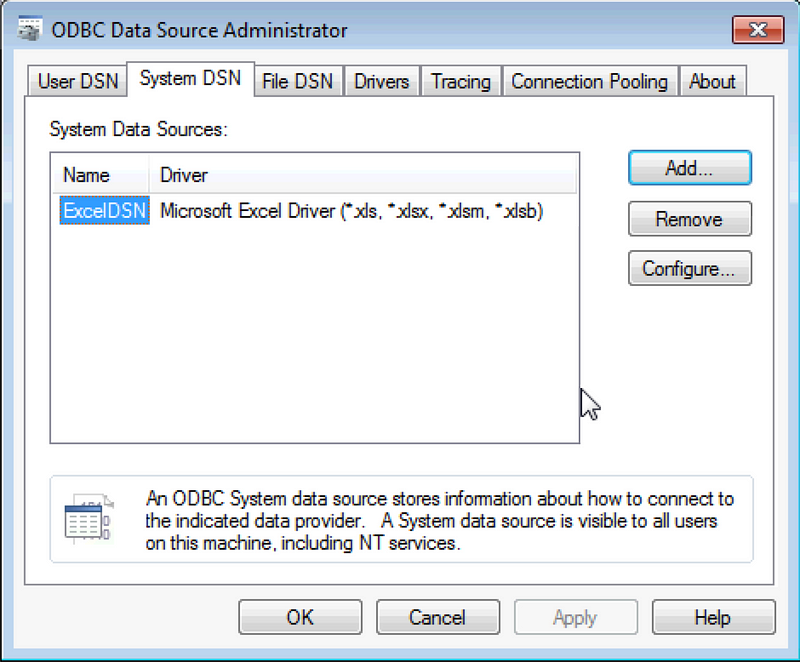4.1.1 Installing the Windows Connector/ODBC Driver Using the Zipped DLL Package
Installing ODBC Drivers for IBM AIX If you intend to use ODBC, then install the most recent ODBC Driver Manager for IBM AIX on POWER Systems (64-Bit). Download and install the ODBC Driver Manager from the following website. At the University, installing the Oracle client and ODBC driver is basically a four or five step process: 1. Download the Oracle installation file. Decompress (i.e., unzip) the Oracle installation file. Optional: Run the Oracle Universal Installer to “uninstall” an earlier version of the Oracle client. To install the ODBC driver, you need administrator-level privileges so that the driver can be installed in the C: Program Files directory. Visual C Redistributable for Visual Studio 2015 ¶ To use Snowflake ODBC Driver in a Windows environment, you have to first install Visual C Redistributable for Visual Studio 2015.
If you have downloaded the zipped DLL package:
Unzip the installation files.
Run the included batch file to perform an installation to the default locations.
Alternatively, install the individual files required for Connector/ODBC operation manually.
The following instructions only work for 32-bit Windows systems. If you have a 64-bit Windows system, use the MSI installer, which installs both the 32-bit and 64-bit drivers to the correct locations.
To install using the batch file:
Unzip the Connector/ODBC zipped DLL package.
Open a command prompt.
Change to the directory created when you unzipped the Connector/ODBC zipped DLL package.
Run
Install.bat:This copies the necessary files into the default location, and then registers the Connector/ODBC driver with the Windows ODBC manager.

Changing or adding a new DSN (data source name) may be accomplished using either the GUI, or from the command-line using myodbc-installer.exe.
Although Oracle recommends installing these files in the standard location, you can also copy the files by hand to an alternative location - for example, to run or test different versions of the Connector/ODBC driver on the same machine. To copy the files to a location of your choice, use the following steps:
Unzip the Connector/ODBC zipped DLL package.
Open a command prompt.
Change to the directory created when you unzipped the Connector/ODBC zipped DLL package.
Copy the library files to a suitable directory. The default location is the default Windows system directory
WindowsSystem32:For Connector/ODBC 8.x:
For Connector/ODBC 5.x:
Copy the Connector/ODBC tools. These must be placed in a directory that is in the system
%PATH%. The default is to install these into the Windows system directoryWindowsSystem32:Optionally, copy the help files. For these files to be accessible through the help system, they must be installed in the Windows system directory:
Finally, register the Connector/ODBC driver with the ODBC manager:
For Connector/ODBC 8.x:
For Connector/ODBC 5.3:
If you installed these files into a non-default location, change the references to the DLL files and command location in the above statement
Last updated on MAY 28, 2019
Applies to:
Oracle Provider for OLE DB - Version 10.2.0.1 and laterOracle ODBC Driver - Version 10.2.0.1 and later
Oracle Data Provider for .NET - Version 10.2.0.1.0 and later
Microsoft Windows (32-bit)
Microsoft Windows x64 (64-bit)
Purpose
To help guide customers on how to install, configure, and test both the 32-bit and 64-bit Oracle Data Provider for .Net (ODP), Oracle Provider for OLE DB (OLEDB), and Oracle ODBC Driver (ODBC) Oracle Software on 64-bit Windows.
This bulletin will discuss the following:
- Facts/Tips
- How & What to Install for 32-bit and 64-bit Oracle Clients.
- How to Test The 64-bit ODP, OLEDB, and ODBC
- How to Test The 32-bit ODP, OLEDB, and ODBC
Scope
This is intended for users trying to use ODP, OLE DB, and ODBC on 64-bit Windows.
Details
To view full details, sign in with your My Oracle Support account. |
Don't have a My Oracle Support account? Click to get started! |

| Purpose |
| Scope |
| Details |
Installing Oracle Odbc Driver On Windows
| References |